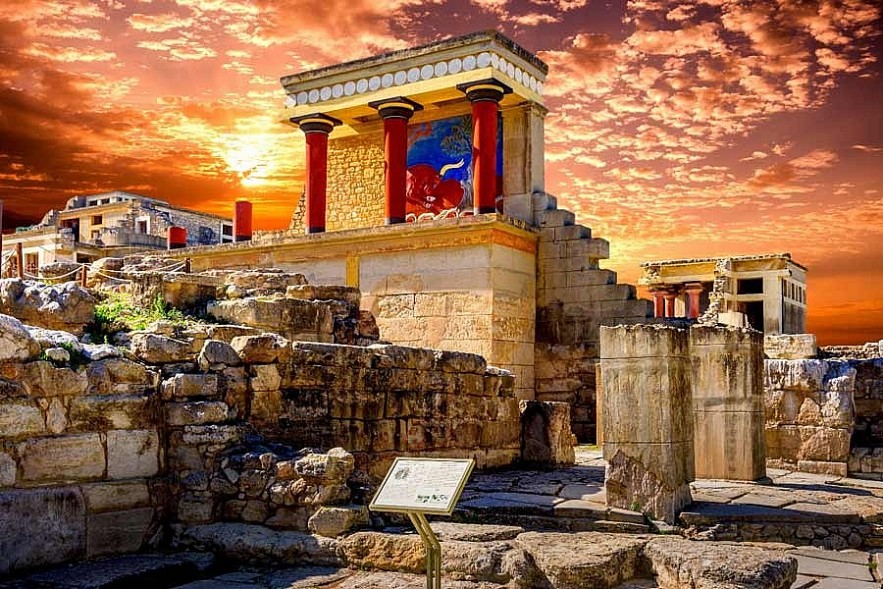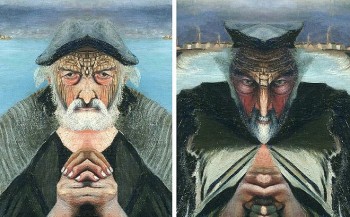Top 9 Great Mysteries in History That Are Still Unsolved
 |
| Ruins of the Minoan Palace at Knossos, Greece |
| Contents |
1. Rongorongo Manuscript
Considered another Easter Island mystery, Rongorongo is the name of the hieroglyphic manuscript written by the first inhabitants of the island. Rongorongo mysteriously appeared in the 1700s while the inhabitants of the neighboring islands did not yet have a written language.
The language has long since disappeared, making it impossible to decipher the manuscript. European colonists banned the language because of the pagan origins of the islanders.
2. The Voynich Manuscript
The Voynich manuscript is perhaps the most difficult book to read in the world. This 500-year-old relic was discovered in 1912 in a library in Rome, including 240 pages of completely unfamiliar writing and illustrations. Cryptographers have tried to decipher this strange script, but no one has succeeded.
Some even think that this is just an old joke. However, analysis of the book shows that the manuscript seems to follow the structures and rules of a real language.
3. How did the city of Helike disappear?
The terrible earthquake that struck Helike overnight and the terrible tsunami that swallowed up what was left of the once-prosperous capital were both described by the Greek writer Pausanias.
Poseidon worship was centered in the capital of this confederation of Achaean city-states. Prior to the discovery of a Helike coin engraved with the head of Poseidon by an archaeologist, the city's existence was unknown outside of Greek texts.
Under a layer of gravel and mud, the city of Helike was discovered in 2001 by two archaeologists. Scientists are working to uncover the city's history, as it is believed by some to be the legendary city of Atlantis.
4. The Fall of the Minoan Empire
The disappearance of the Minoan Empire remains mysterious even as historians uncover more and more reasons for the fall of the Roman Empire.
That is when the legend of the king and the monster that ate him started, some 3,500 years ago, when an earthquake on the island of Thera wiped out all life on Crete.
The archaeologists' discovery of clay tablets indicates that this Empire persisted for approximately fifty years before it vanished entirely. Among the theories regarding the collapse are the claims that crops failed due to a layer of volcanic ash or that Greece invaded them.
5. Carnac Stone Columns
Scientists are still baffled by the English Stonehenge, but perhaps even more intriguing is the Carnac work located on the Brittany coast in northeastern France.
Over 3,000 megalithic columns are perfectly aligned in a line spanning over 12 kilometers. According to a local legend, the magician Merlin petrified a Roman legion, which is represented by these pillars.
After more than 30 years of research, a scientist theorizes that these pillars could be used as a tool for earthquake prediction. The people who constructed this structure in the Neolithic era are still unknown.
6. Who is Robin Hood?
The fabled jungle knight Robin Hood, who ambushed the wealthy and distributed his loot among the impoverished, is still a mystery to historians, though a long list of potential suspects has surfaced. A Robert Hood from Wakefield and a Robert Hod, Hobbehod, a Yorkshire fugitive, were among them.
The process of eliminating names grew more difficult since "Robin Hood" denoted an outlaw, as in William Lefevre's case. Court records later show that the man changed his last name to Robehod.
With the addition of Prince John and Richard the Mighty by the storytellers later on, the quest for this legendary figure grew increasingly challenging.
7. The Disappearance of a Roman Legion
After an inept Roman army led by General Crassus was defeated by the Persians, it is thought that a small group of POWs crossed the desert and eventually joined the army 17 years later. Ban Gu, a 1st century Chinese historian, describes a clash with a strange army that fought in fish-scale formations, a feature of the Roman army.
An Oxford University historian compares ancient documents and proposes that Roman remnants built a small town near the Gobi Desert called Liqian (the Chinese spelling of the word "Roman"). Scientists are conducting DNA tests to back up this theory and explain some of the characteristics of this army's descendants today, such as green eyes, blond hair, and a penchant for bullfighting.
8. Swamp Mummy
So far, hundreds of mummies, mostly from the Iron Age, have been discovered in northern European swamps. The majority of the well-preserved mummies are over 2,000 years old and bear evidence of torture and violence. Scientists hypothesized that these terrifying relics were victims of an ancient ritual sacrifice.
9. Lake Tarim Mummy
Archaeologists discovered more than 100 2,000-year-old mummies during an excavation beneath the Tarim Basin in western China. When confronted with blonde, long-nosed mummies in a museum exhibit, university professor Victor Mair was so taken aback that he returned in 1993 to collect DNA samples.
 Top 10 Mysteries of Human Behaviour That Science Fails to Explain Top 10 Mysteries of Human Behaviour That Science Fails to Explain Human behaviour is an interesting topic to talk about, and scientists have been learning about it for years. Here is top 10 mysteries of human ... |
 Top 13 Most Creepy And Mysterious Mysteries That Have Finally Been Explained Top 13 Most Creepy And Mysterious Mysteries That Have Finally Been Explained There have been lots of creepy mysteries about specific people and places on Earth. Some happened accidentally, making haunted stories. Others happened for reasons. |
 Fact-Check: Top 15 Mysteries Behind the Famous Artworks of All Time Fact-Check: Top 15 Mysteries Behind the Famous Artworks of All Time Thanks to modern technology and hundreds of years later,, we have discovered the "top secrets" hidden in these artworks such as painting, statue, etc. |























